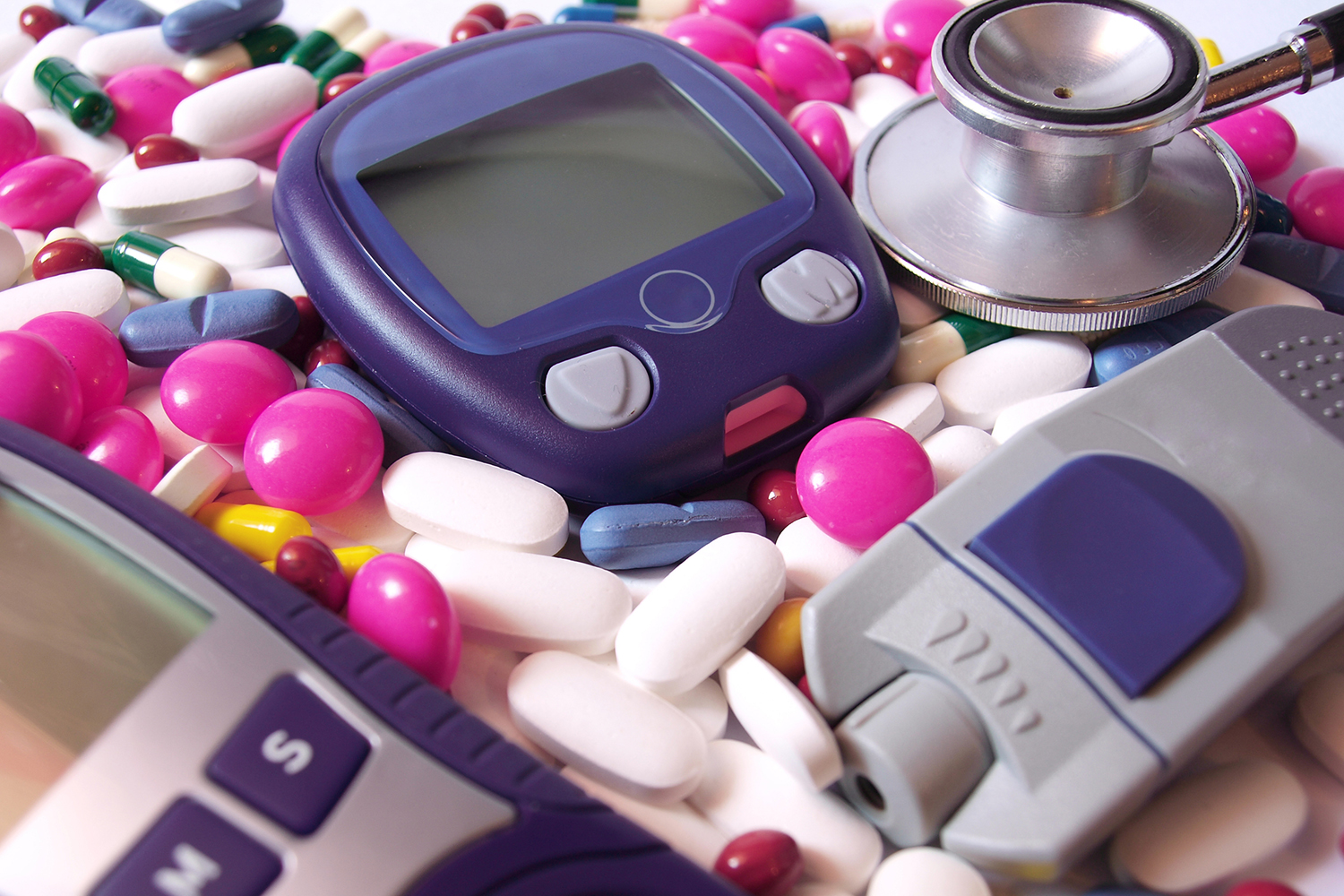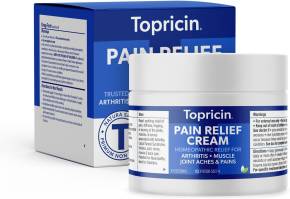How to Balance Blood Sugar Naturally
Enjoy a Longer (and Better!) Life

ID 20942149 © Nennanenna | Dreamstime.com
Does anyone remember Sugar Pops, Sugar Frosted Flakes, or Sugar Crisp?
A few decades back, parents had no idea of the approaching sugar and corn syrup tsunami that was about to drown American health.
Generation Sugar
At that time, “sugar” in the name of a breakfast cereal was appealing, not alarming.
I remember my parent’s idea of a healthy breakfast:
- Sugary cereal (I was a Captain Crunch fan) in skim milk.
- Wonder bread toasted and slathered with margarine (so much better than that nasty animal fat, butter!)
- A glass of Tang (on cold winter mornings, substitute Ovaltine in warm milk).
I imagine many of you, especially if you are over 40, have had similar experiences.
Don't Believe the Marketing Hype!
Our parents loved us. Their mistake was in believing whatever was said on television. And the television said this was a healthy breakfast.
Remember, television was newer in the 1950s and 60s, and the average American had yet to understand its incredible power. It seems that Big Food figured it out much earlier and made a fortune marketing foods that taste good (more sugar!) but are nutritionally devastating.
It is similar to the marketing strategies for Big Tobacco.
Fat vs Sugar, Who is the Culprit?
For far too many years, we vilified fat as the cause of all our health woes, when in fact, the true culprit was sugar and other refined carbohydrates.
It turns out that as early as the 1950s, the sugar industry started paying for research that minimized the risks of sugar and targeted fat as the “real” health hazard.
In fact, historians have found that as far back as 1954, sugar executives were lobbying to get Americans to eat a low fat diet (for their health!), knowing those calories would be replaced by something else – sugar!
This campaign was incredibly successful. Americans now eat more sugar than any country in the world.
Daily average sugar intake in India? 5 grams. Italy? 58 grams.
The United States? 126 grams. That is the equivalent of about 32 teaspoons of sugar.
Is it any wonder that our rates for type 2 diabetes are astronomical, and if left unchecked, in only 12 years, more adults will have diabetes than those who don’t?
Now we must face the difficult task of repairing the damage that excessive intake of sugars and simple carbohydrates has caused. Whether you are concerned with prevention or already have blood sugar issues, it is never too late to improve.
Frightening Diabetes Facts
If you need motivation, there are some pretty alarming numbers associated with diabetes and blood sugar dysfunction.
According to the Centers for Disease Control and Prevention, each year there are almost 80,000 deaths in the United States attributed to diabetes.
Lifespan with Diabetes
Type 2 diabetes causes a shorter lifespan due to an increase in health conditions like cardiovascular and kidney disease.
In a study looking at over 400,000 people with diabetes and two million matched controls, people with diabetes were on average 13 to 15 percent more likely to suffer from a cardiovascular-related death than the control population.
The increased incidence of cardiovascular death associated with diabetes was more prevalent in people who were of a younger age, had poor blood sugar control, and had greater renal complications.
Lifespan and HbA1C Levels
People less than 55 years old with a hemoglobin A1C level (a measure of blood sugar health) of 6.9 percent or less were almost twice as likely to die from any cause as compared to controls.
For people with an HbA1C level of > 9.7 percent and were 55 years of age or younger, their risk of death from any cause increased to an average of four times as likely, with cardiovascular death showing an average increase of more than 5-fold, as compared to people without blood sugar issues.
Natural Answers for Diabetes
The important thing to remember is that it is never too late to make some improvements in your blood sugar, and that, in turn, will lead to a longer, healthier life.
-
Reduce Your Carbs
The most important thing anyone can do for diabetes prevention and treatment is to dramatically reduce sugar and simple carbs.
Get rid of the white bread, white rice, white pizza crust, and white potatoes. I often tell folks, only partly joking, to not eat anything white unless it is cauliflower.
-
Give Up Sugary Sweets
Some people gasp at the thought of giving up sweets. That is because sweets make us feel so good.
But the truth is, life is sweeter without sugar. If you want to have a glass of wine, or a piece of dark chocolate, go ahead.
-
Make Conscious Decisions
The dangers come from the thoughtless eating of sugars and refined carbs.
- Sweet cereal for breakfast.
- A sub on a white bun for lunch with potato chips or fries.
- Spaghetti for dinner.
- A few cans of high fructose sweetened sodas all day long.
That is a recipe for sugar imbalance.
-
Consider Hintonia latiflora
There is also a very effective natural product from Germany that has been clinically proven to improve blood sugar levels, HgbA1c tests, and overall blood sugar metabolism. It is all based on a botanical originally from Mexico and Central America called Hintonia latiflora.
The bark of this hardy shrub contains a compound called coutareagenin that effectively and safely lowers blood sugar and helps to repair broken blood sugar metabolism.
Studies on Hintonia latiflora
-
Eight Month Study
In an eight-month clinical study, 178 people with Type 2 diabetes or pre-diabetes were given Hintonia latiflora, in addition to their regular diabetes protocol.
- One group had diet changes only.
- Another group used insulin.
- A third group used oral drugs to lower blood sugar.
- The last group used both insulin and oral drugs for their diabetes.
At the end of the study, HbA1C levels decreased by 11 percent and fasting blood glucose by 23 percent. In addition, diabetic complications like neuropathy, itching, and excessive sweating decreased by 73 percent.
At the end of the study, nearly half of the participants were able to reduce or even eliminate their medication by the end of the study.
Remember that this was done under the supervision of medical doctors.
-
Thirty-Three Month Studay
Another study involving Hintonia latiflora was long term and included patients who took it daily for up to 33 months.
The researchers found that people were able to make significant reductions to their fasting blood glucose and HbA1C.
Plus, during the whole treatment period there were no hypoglycemic events, or unfavorable drops in blood sugar.
-
-
Treat Diabetes with Nutrients
There are many nutrients that play an important role in treating diabetes and creating balanced blood sugar metabolism.
-
The B Vitamins
The B family of vitamins are crucially important, but it is important to remember that people with diabetes or pre-diabetes need the active form of the Bs. The active forms are sometimes called the methylated form, for example, methylcobalamin is the active form of B12, and methylfolate is the active form of folic acid.
-
Minerals
Chromium and vanadium are minerals that have been shown to address various aspects of blood sugar imbalance.
-
Alpha Lipoic Acid
Alpha lipoic acid is excellent, not only for blood sugar, but in helping to correct some of the nerve damage diabetes can cause.
-
“Development of life-expectancy tables for people with Type 2 diabetes” by J. Leal et al., Eur Heart J, 4/09
“Diabetes mellitus, fasting glucose, and risk of cause-specific death” by R. Kondapally et al.. N Engl J Med, 3/11
“Fifty years ago, sugar industry quietly paid scientists to point blame at fat," National Public Radio,
“Hintonia concentrate – for the dietary treatment of increased blood sugar values: Results of a multicentric, prospective, non-interventional study with a defined dry concentrate of hintonia latiflora” by M. Schmidt and M. Hladikova, Naturheilpraxis mit Naturmedizin, 2/14
“Hintonia latiflora Type-2 diabetes” by M. Korecova et al., Zeitschrift für Phytotherapie, 2006
“Identifying causes for excess mortality in patients with diabetes...” by O. Hoi Yun Yu and S. Suissa, Diabetes Care, 11/16
“National Center for Health Statistics,” Centers for Disease Control and Prevention, 5/3/17
“Sugar demographics around the world,” Washington Post
“Excess mortality among persons with Type 2 diabetes” by M. Tancredi et al.. NEJM, 10/15
Cheryl Myers
Cheryl Myers, RN, is an integrative health nurse, author, and expert on natural medicine. She is a nationally recognized speaker who has been interviewed by the New York Times, Wall Street Journal and Prevention magazine. Her articles have been published in Aesthetic Surgery Journal and Nutrition in Complementary Care, and her research on botanicals has been presented at the American College of Obstetrics and Gynecology and the North American Menopause Society. Follow Cheryl on Facebook!
Don't Miss a Thing!
Get the latest articles, recipes, and more, when you sign up for the tasteforlife.com newsletter.

